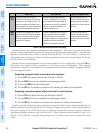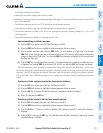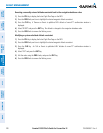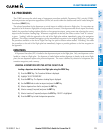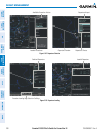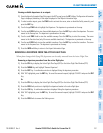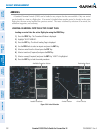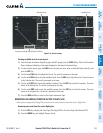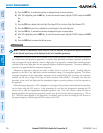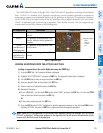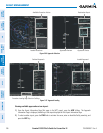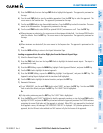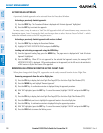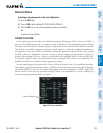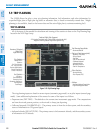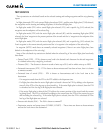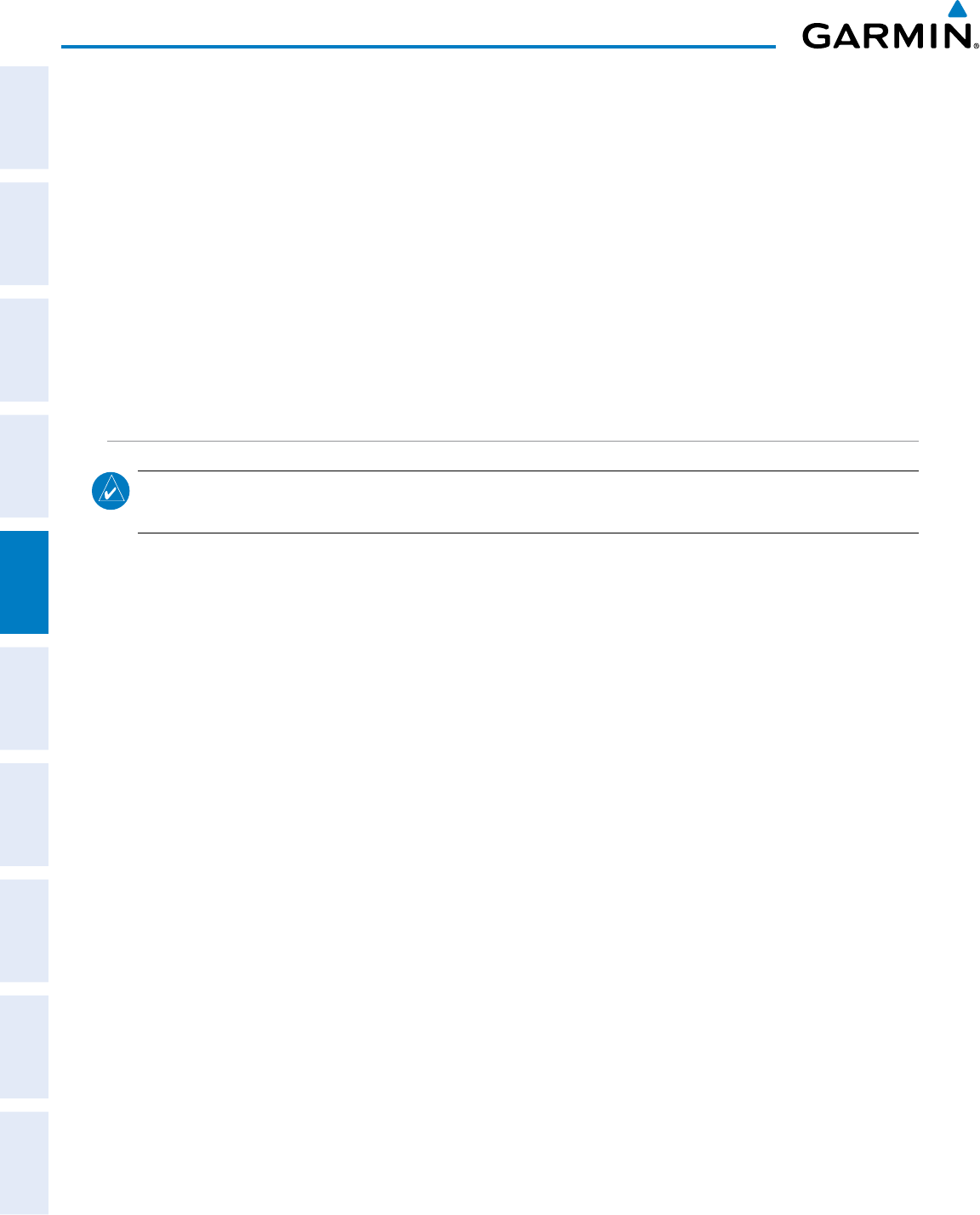
Garmin G1000 Pilot’s Guide for Cessna Nav III
190-00498-07 Rev. A234
FLIGHT MANAGEMENT
SYSTEM
OVERVIEW
FLIGHT
INSTRUMENTS
EIS
AUDIO PANEL
& CNS
FLIGHT
MANAGEMENT
HAZARD
AVOIDANCE
AFCS
ADDITIONAL
FEATURES
APPENDICESINDEX
3) Press the ENT Key. A confirmation window is displayed listing the arrival procedure.
4) With ‘OK’ highlighted, press the ENT Key. To cancel the removal request, highlight ‘CANCEL’ and press the ENT
Key.
Or:
1) Press the FPL Key to display the Active Flight Plan Page (MFD) or the Active Flight Plan Window (PFD)
2) Press the FMS Knob, and turn to highlight the arrival header in the active flight plan.
3) Press the CLR Key. A confirmation window is displayed listing the arrival procedure.
4) With ‘OK’ highlighted, press the ENT Key. To cancel the removal request, highlight ‘CANCEL’ and press the ENT
Key.
5) Press the FMS Knob to remove the flashing cursor.
APPROACHES
NOTE: If certain GPS parameters (SBAS, RAIM, etc.) are not available, some published approach procedures
for the desired airport may not be displayed in the list of available approaches.
An Approach Procedure (APPR) can be loaded at any airport that has one available, and provides guidance
for non-precision and precision approaches to airports with published instrument approach procedures.
Only one approach can be loaded at a time in a flight plan. If an approach is loaded when another approach
is already in the active flight plan, the new approach replaces the previous approach. The route is defined by
selection of an approach and the transition waypoints.
Whenever an approach is selected, the choice to either “load” or “activate” is given. “Loading” adds the
approach to the end of the flight plan without immediately using it for navigation guidance. This allows
continued navigation via the intermediate waypoints in the original flight plan, but keeps the procedure
available on the Active Flight Plan Page for quick activation when needed. “Activating” also adds the
procedure to the end of the flight plan but immediately begins to provide guidance to the first waypoint in
the approach.
When selecting an approach, a “GPS” designation to the right of the procedure name indicates the procedure
can be flown using the GPS receiver. Some procedures do not have this designation, meaning the GPS
receiver can be used for supplemental navigation guidance only. If the GPS receiver cannot be used for
primary guidance, the appropriate navigation receiver must be used for the selected approach (e.g., VOR or
ILS). The final course segment of ILS approaches, for example, must be flown by tuning the NAV receiver to
theproperfrequencyandselectingthatNAVreceiverontheCDI.



